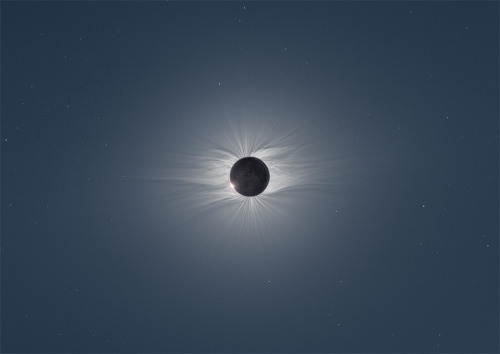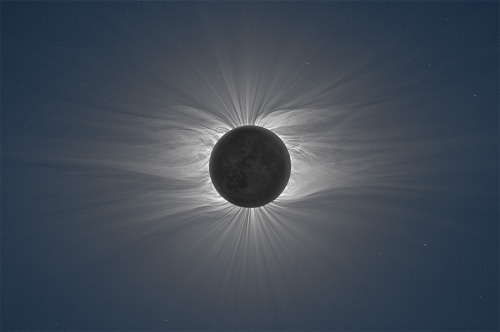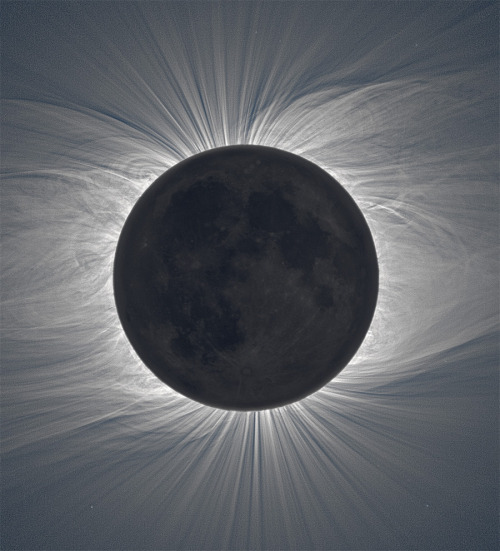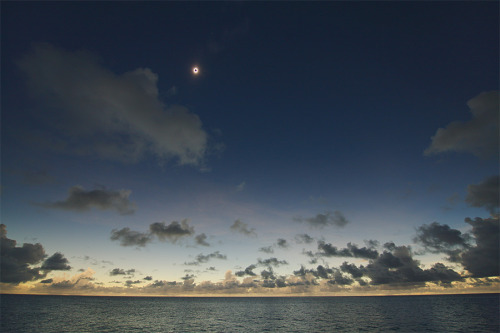This Is Hands Down One Of The Most Beautiful Images I’ve Ever Seen. This Is A Visible-light Image Of

This is hands down one of the most beautiful images I’ve ever seen. This is a visible-light image of Jupiter’s clouds from a mere 5000 km away.
What’s even more amazing is that this image was taken by JunoCam, NASA’s camera essentially being controlled by regular folks, not scientists. The public takes part in selecting targets to photograph, as well as having access to the raw data that comes back and you can even take the raw images that come back and process your own picture! Learn more about it all right here.
Thank you NASA!
(Image credit: NASA/JPL-Caltech/SwRI/MSSS/Gerald Eichstaedt/John Rogers)
More Posts from Maevetheeuropan and Others

Mars Orbiter Mission: April 11, 2016 Clouds over Olympus Mons, April 11th 2016
Olympus Mons is a large shield volcano on the planet Mars. It has a height of nearly 22 km. Olympus Mons stands almost three times as tall as Mount Everest’s height above sea level. It is the youngest of the large volcanoes on Mars, having formed during Mars’s Amazonian Period. Several meteorological factors contribute to cloud formation. This MCC image was taken on April 11, 2016 at an altitude of 22,794 km and resolution of 1,185 meters. The image shows cloud around Olympus Mons Region.
this website pisses me off, everyones always like “space is so cool!” not its not, space is bullshit and i hate everything about it, i genuinely just saw the phrase “a black hole with a mass two billion times the mass of the sun” im so pissed off, shut the fuck up, dont patronise me scientists you know i dont know what the fuck that means, my sad little brain cant comprehend the mass of one sun let alone two fucking billion, i cant even count past 10 without getting confused and youre out here talking about the mass of two billion fucking suns, shut the hell up. and dont even get me started about black holes or the expansion of the universe because thats another two seperate rants entierly. oh and apparently theres a planet made of ice except the ice is also on fire??? yeah sure fucking thing, scientists. and this is just the shit i know about. i purposely dont research space because it pisses me off so much, god knows what other fucking bullshit exists out there that ive yet to read a fucking wikipedia article about. i dont think space is real, literally everything about space is so fucking fake, this is just some elaborate fucking practicle joke. two billion times the mass of the sun, fuck you
Solar System: Things to Know This Week
Reaching out into space yields benefits on Earth. Many of these have practical applications — but there’s something more than that. Call it inspiration, perhaps, what photographer Ansel Adams referred to as nature’s “endless prospect of magic and wonder."
Our ongoing exploration of the solar system has yielded more than a few magical images. Why not keep some of them close by to inspire your own explorations? This week, we offer 10 planetary photos suitable for wallpapers on your desktop or phone. Find many more in our galleries. These images were the result of audacious expeditions into deep space; as author Edward Abbey said, "May your trails be crooked, winding, lonesome, dangerous, leading to the most amazing view.”

1. Martian Selfie
This self-portrait of NASA’s Curiosity Mars rover shows the robotic geologist in the “Murray Buttes” area on lower Mount Sharp. Key features on the skyline of this panorama are the dark mesa called “M12” to the left of the rover’s mast and pale, upper Mount Sharp to the right of the mast. The top of M12 stands about 23 feet (7 meters) above the base of the sloping piles of rocks just behind Curiosity. The scene combines approximately 60 images taken by the Mars Hand Lens Imager, or MAHLI, camera at the end of the rover’s robotic arm. Most of the component images were taken on September 17, 2016.
800 x 600
1024 x 768
1280 x 1024
1600 x 1200
1280 x 800
1440 x 900
1920 x 1200

2. The Colors of Pluto
NASA’s New Horizons spacecraft captured this high-resolution, enhanced color view of Pluto on July 14, 2015. The image combines blue, red and infrared images taken by the Ralph/Multispectral Visual Imaging Camera (MVIC). Pluto’s surface sports a remarkable range of subtle colors, enhanced in this view to a rainbow of pale blues, yellows, oranges, and deep reds. Many landforms have their own distinct colors, telling a complex geological and climatological story that scientists have only just begun to decode.
800 x 600
1024 x 768
1280 x 1024
1600 x 1200
1280 x 800
1440 x 900
1920 x 1200

3. The Day the Earth Smiled
On July 19, 2013, in an event celebrated the world over, our Cassini spacecraft slipped into Saturn’s shadow and turned to image the planet, seven of its moons, its inner rings — and, in the background, our home planet, Earth. This mosaic is special as it marks the third time our home planet was imaged from the outer solar system; the second time it was imaged by Cassini from Saturn’s orbit, the first time ever that inhabitants of Earth were made aware in advance that their photo would be taken from such a great distance.
800 x 600
1024 x 768
1280 x 1024
1600 x 1200
1280 x 800
1440 x 900
1920 x 1200

4. Looking Back
Before leaving the Pluto system forever, New Horizons turned back to see Pluto backlit by the sun. The small world’s haze layer shows its blue color in this picture. The high-altitude haze is thought to be similar in nature to that seen at Saturn’s moon Titan. The source of both hazes likely involves sunlight-initiated chemical reactions of nitrogen and methane, leading to relatively small, soot-like particles called tholins. This image was generated by combining information from blue, red and near-infrared images to closely replicate the color a human eye would perceive.
800 x 600
1024 x 768
1280 x 1024
1600 x 1200
1280 x 800
1440 x 900
1920 x 1200

5. Catching Its Own Tail
A huge storm churning through the atmosphere in Saturn’s northern hemisphere overtakes itself as it encircles the planet in this true-color view from Cassini. This picture, captured on February 25, 2011, was taken about 12 weeks after the storm began, and the clouds by this time had formed a tail that wrapped around the planet. The storm is a prodigious source of radio noise, which comes from lightning deep within the planet’s atmosphere.
800 x 600
1024 x 768
1280 x 1024
1600 x 1200
1280 x 800
1440 x 900
1920 x 1200

6. The Great Red Spot
Another massive storm, this time on Jupiter, as seen in this dramatic close-up by Voyager 1 in 1979. The Great Red Spot is much larger than the entire Earth.
800 x 600
1024 x 768
1280 x 1024
1600 x 1200
1280 x 800
1440 x 900
1920 x 1200

7. More Stormy Weather
Jupiter is still just as stormy today, as seen in this recent view from NASA’s Juno spacecraft, when it soared directly over Jupiter’s south pole on February 2, 2017, from an altitude of about 62,800 miles (101,000 kilometers) above the cloud tops. From this unique vantage point we see the terminator (where day meets night) cutting across the Jovian south polar region’s restless, marbled atmosphere with the south pole itself approximately in the center of that border. This image was processed by citizen scientist John Landino. This enhanced color version highlights the bright high clouds and numerous meandering oval storms.
800 x 600
1024 x 768
1280 x 1024
1600 x 1200
1280 x 800
1440 x 900
1920 x 1200

8. X-Ray Vision
X-rays stream off the sun in this image showing observations from by our Nuclear Spectroscopic Telescope Array, or NuSTAR, overlaid on a picture taken by our Solar Dynamics Observatory (SDO). The NuSTAR data, seen in green and blue, reveal solar high-energy emission. The high-energy X-rays come from gas heated to above 3 million degrees. The red channel represents ultraviolet light captured by SDO, and shows the presence of lower-temperature material in the solar atmosphere at 1 million degrees.
800 x 600
1024 x 768
1280 x 1024
1600 x 1200
1280 x 800
1440 x 900
1920 x 1200

9. One Space Robot Photographs Another
This image from NASA’s Mars Reconnaissance Orbiter shows Victoria crater, near the equator of Mars. The crater is approximately half a mile (800 meters) in diameter. It has a distinctive scalloped shape to its rim, caused by erosion and downhill movement of crater wall material. Since January 2004, the Mars Exploration Rover Opportunity has been operating in the region where Victoria crater is found. Five days before this image was taken in October 2006, Opportunity arrived at the rim of the crater after a drive of more than over 5 miles (9 kilometers). The rover can be seen in this image, as a dot at roughly the “ten o'clock” position along the rim of the crater. (You can zoom in on the full-resolution version here.)
800 x 600
1024 x 768
1280 x 1024
1600 x 1200
1280 x 800
1440 x 900
1920 x 1200

10. Night Lights
Last, but far from least, is this remarkable new view of our home planet. Last week, we released new global maps of Earth at night, providing the clearest yet composite view of the patterns of human settlement across our planet. This composite image, one of three new full-hemisphere views, provides a view of the Americas at night from the NASA-NOAA Suomi-NPP satellite. The clouds and sun glint — added here for aesthetic effect — are derived from MODIS instrument land surface and cloud cover products.
Full Earth at night map
Americas at night
Discover more lists of 10 things to know about our solar system HERE.
Make sure to follow us on Tumblr for your regular dose of space: http://nasa.tumblr.com

New Hubble Portrait of Mars (which will be at its closest to us on 30 May)
On May 12, 2016, the Hubble Space Telescope captured this vivid photo of Mars, when the planet was closer to Earth than usual and approaching the opposition (when the sun and Mars will be on exact opposite sides of Earth). Mars is especially photogenic during opposition because it can be seen fully illuminated by the sun as viewed from Earth. Mars will reach opposition on May 22.
Furthermore, the closest approach to Earth for the year will occur on 30 May, when Mars will be at a distance of 75.28 million km (46.78 million miles) from us. For comparison, the average distance between the two is 225 million km. These two events so close together make the coming week(s) the best time to observe the red planet with a telescope. You can already notice it in the night sky (check for your location) as one of the brightest dots with a red-orange glow near the Moon.
Read about the Hubble’s image here.
Image credits: NASA, ESA, the Hubble Heritage Team (STScI/AURA), J. Bell (ASU), and M. Wolff (Space Science Institute)
@laurathia -YES these are my favorite kind of articles to read!
@maevemauvaise
Spacewalk Friday: Installing a New "Parking Spot" on Station
This Friday, Aug. 19, two U.S. astronauts will install a new gateway for American commercial crew spacecraft at the International Space Station.

Commercial crew flights from Florida’s Space Coast to the International Space Station will restore America’s human spaceflight launch capability and increase the time U.S. crews can dedicate to scientific research.

The adapter being installed (imaged below) was launched on a SpaceX Dragon cargo spacecraft and arrived on orbit July 20. NASA astronauts Jeff Williams and Kate Rubins will perform the spacewalk to install the equipment this Friday, Aug. 19. This will be the fourth spacewalk in Williams’ career and the first for Rubins.

Four previous spacewalks…like the one below…helped set the stage for installation of this docking adapter. During those previous spacewalks, other crew members laid hundreds of feet of power and data cables outside the space station.

On Wednesday, the robotics team using the Canadarm2 and its attached “Dextre” manipulator, will reach into the SpaceX Dragon trunk and pull out the docking adapter and position it for Friday’s spacewalk activities.

The morning of the spacewalk, while the astronauts are getting suited up, the robotic arm will position the docking adaptor near the port so that it will be ready for installation.

The two astronauts will venture outside the space station to install the first International Docking Adapter (IDA). This new adapter port will provide a parking space for U.S. Commercial Crew vehicles.
Watch LIVE!
Coverage of the spacewalk begins at 6:30 a.m. EDT on Friday, Aug. 19; with the spacewalk scheduled to begin at 8:05 a.m. EDT. Stream live online HERE.
Make sure to follow us on Tumblr for your regular dose of space: http://nasa.tumblr.com

Yeeeeeeeeees!
I am filled with such excitement!
Moral of the story:
Don’t fuck with the scientists and park rangers.
They largely consider themselves above politics.
The Republicans have awakened a sleeping giant.
-
 bornite reblogged this · 2 years ago
bornite reblogged this · 2 years ago -
 purified-zone liked this · 7 years ago
purified-zone liked this · 7 years ago -
 0n-n0-air liked this · 7 years ago
0n-n0-air liked this · 7 years ago -
 goddess-of-the-galaxy liked this · 8 years ago
goddess-of-the-galaxy liked this · 8 years ago -
 outerspace-v liked this · 8 years ago
outerspace-v liked this · 8 years ago -
 ahlausahla reblogged this · 8 years ago
ahlausahla reblogged this · 8 years ago -
 vandyburger liked this · 8 years ago
vandyburger liked this · 8 years ago -
 littleredhatter liked this · 8 years ago
littleredhatter liked this · 8 years ago -
 burlesque-articulation reblogged this · 8 years ago
burlesque-articulation reblogged this · 8 years ago -
 megolazunalom liked this · 8 years ago
megolazunalom liked this · 8 years ago -
 graphina reblogged this · 8 years ago
graphina reblogged this · 8 years ago -
 graphina liked this · 8 years ago
graphina liked this · 8 years ago -
 rockfarkas liked this · 8 years ago
rockfarkas liked this · 8 years ago -
 avgdvl liked this · 8 years ago
avgdvl liked this · 8 years ago -
 mossystones liked this · 8 years ago
mossystones liked this · 8 years ago -
 doomsdayoutlaw reblogged this · 8 years ago
doomsdayoutlaw reblogged this · 8 years ago -
 doomsdayoutlaw liked this · 8 years ago
doomsdayoutlaw liked this · 8 years ago -
 rchlweisz liked this · 8 years ago
rchlweisz liked this · 8 years ago -
 offtoseethealiens reblogged this · 8 years ago
offtoseethealiens reblogged this · 8 years ago -
 buddy-pals liked this · 8 years ago
buddy-pals liked this · 8 years ago -
 inikokoru liked this · 8 years ago
inikokoru liked this · 8 years ago -
 gweniciraptor liked this · 8 years ago
gweniciraptor liked this · 8 years ago -
 pedantically-persephone reblogged this · 8 years ago
pedantically-persephone reblogged this · 8 years ago -
 moonwolf01 liked this · 8 years ago
moonwolf01 liked this · 8 years ago -
 trashyacee liked this · 8 years ago
trashyacee liked this · 8 years ago -
 kaydrikoo reblogged this · 8 years ago
kaydrikoo reblogged this · 8 years ago -
 kaydrikoo liked this · 8 years ago
kaydrikoo liked this · 8 years ago -
 xtwears-blog liked this · 8 years ago
xtwears-blog liked this · 8 years ago -
 chesheyer reblogged this · 8 years ago
chesheyer reblogged this · 8 years ago -
 chesheyer liked this · 8 years ago
chesheyer liked this · 8 years ago -
 turquoisemagpie reblogged this · 8 years ago
turquoisemagpie reblogged this · 8 years ago -
 turquoisemagpie liked this · 8 years ago
turquoisemagpie liked this · 8 years ago -
 pattern-shirt-gang liked this · 8 years ago
pattern-shirt-gang liked this · 8 years ago -
 dydt liked this · 8 years ago
dydt liked this · 8 years ago -
 hzechcunter liked this · 8 years ago
hzechcunter liked this · 8 years ago











